Articles tagged with “tutorial”
Written Tutorial | Fuel Treatments. Why Bother?
Posted on October 26, 2010
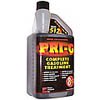 More and more lately there has been a lot of talk about long term fuel storage and preservation. There are many situations where fuel storage and restoration need to be considered, like when equipment is put into storage more than a couple weeks, such as RV's, motorcycles, boats, classic cars, etc. Often we are asked about gasoline, kerosene, and diesel fuel storage, so we decided to put the info we know "out there" on the Internet. Some information on the Internet is wrong and some is old. read more...
More and more lately there has been a lot of talk about long term fuel storage and preservation. There are many situations where fuel storage and restoration need to be considered, like when equipment is put into storage more than a couple weeks, such as RV's, motorcycles, boats, classic cars, etc. Often we are asked about gasoline, kerosene, and diesel fuel storage, so we decided to put the info we know "out there" on the Internet. Some information on the Internet is wrong and some is old. read more...Video Feature | Interactive Battery Tutorial
Posted on November 5, 2010
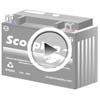 Ever wonder how a lead acid AGM battery works? You know, the ones that start our motor bikes? If you're like me, it's nothing short of a miracle when I think about how electricity comes out and gets put back in the black little box. Check out our latest tutorial, visually giving you a guided tour about an AGM Battery, and how it works. read more...
Ever wonder how a lead acid AGM battery works? You know, the ones that start our motor bikes? If you're like me, it's nothing short of a miracle when I think about how electricity comes out and gets put back in the black little box. Check out our latest tutorial, visually giving you a guided tour about an AGM Battery, and how it works. read more...Written Tutorial | How Do I Pick a Battery Charger?
Posted on November 16, 2010
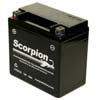 Let me start with a disclaimer; BatteryStuff.com does not sell inexpensive off the shelf chargers such as the type often found at retail outlets and certain other online stores. We cater specifically to microprocessor controlled chargers, also known as Smart Chargers. All the chargers we stock are reviewed, tested, and selected based on function, reliability and durability. These chargers are designed to charge lead acid and other types of batteries based on computer generated algorithms. Simply put, the charger collects information from the battery and adjusts the charge current and voltage based on this information. This allows the battery to be charged quickly, correctly, and completely when using a smart charger. read more...
Let me start with a disclaimer; BatteryStuff.com does not sell inexpensive off the shelf chargers such as the type often found at retail outlets and certain other online stores. We cater specifically to microprocessor controlled chargers, also known as Smart Chargers. All the chargers we stock are reviewed, tested, and selected based on function, reliability and durability. These chargers are designed to charge lead acid and other types of batteries based on computer generated algorithms. Simply put, the charger collects information from the battery and adjusts the charge current and voltage based on this information. This allows the battery to be charged quickly, correctly, and completely when using a smart charger. read more...Written Tutorial | Testing Your Battery for Parasitic Load
Posted on November 22, 2010
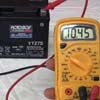 Testing a system for current drain To check if something is draining your battery while your bike is turned off you need to test for current, not volts. To do so, do the following: Switch your multi meter to DC AMPs. Amps is usually indicated by an "A" on the Multimeter Switch. AC is usually shown as a "~" symbol and DC shown as a "-" symbol. You usually have to move the Multimeter positive lead to a separate socket on the Multimeter. Sometimes there are 2 sockets, a high range and a low range. Always test on the highest setting first. For example: high setting on your multimeter may be 10 Amp. Test on the 10 Amp setting first, then if the current drawn is less than your Multimeter Low setting, move to that setting and keep testing. read more...
Testing a system for current drain To check if something is draining your battery while your bike is turned off you need to test for current, not volts. To do so, do the following: Switch your multi meter to DC AMPs. Amps is usually indicated by an "A" on the Multimeter Switch. AC is usually shown as a "~" symbol and DC shown as a "-" symbol. You usually have to move the Multimeter positive lead to a separate socket on the Multimeter. Sometimes there are 2 sockets, a high range and a low range. Always test on the highest setting first. For example: high setting on your multimeter may be 10 Amp. Test on the 10 Amp setting first, then if the current drawn is less than your Multimeter Low setting, move to that setting and keep testing. read more...Video Feature | AGM Battery Visual Tour
Posted on December 13, 2010
 The Absorbed Glass Matte (AGM) Battery is a type of Lead Acid Battery. The plates inside of the cells are covered with active materials, and when a load is applied, the electrolyte in the glass matte allows for easy discharge of electrons. What does this mean? Watch to find out!
The Absorbed Glass Matte (AGM) Battery is a type of Lead Acid Battery. The plates inside of the cells are covered with active materials, and when a load is applied, the electrolyte in the glass matte allows for easy discharge of electrons. What does this mean? Watch to find out!
More Tutorials Online: /kb read more...
Written Tutorial | Cooling Tutorial
Posted on December 28, 2010
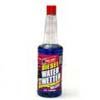 Years ago environmental required cleaner burning engines and thus engine operating temperatures were raised in order to reduce exhaust emissions. Today's engines run on the borderline of overheating. We have found that many people neglect their cooling systems until it becomes a costly problem. A properly maintained cooling system will provide excellent service for many years. There is more to maintenance than just changing the antifreeze every two years. read more...
Years ago environmental required cleaner burning engines and thus engine operating temperatures were raised in order to reduce exhaust emissions. Today's engines run on the borderline of overheating. We have found that many people neglect their cooling systems until it becomes a costly problem. A properly maintained cooling system will provide excellent service for many years. There is more to maintenance than just changing the antifreeze every two years. read more...Written Tutorial | Lubrication Tutorial
Posted on January 3, 2011
 /images/tutorial_lube.gifThere are a lot of options available when it comes to lubricants. We have mineral based (oil that comes from the ground), blends, a combination of mineral and synthetic, and full synthetic. We use these lubricants in engines, transmissions, gear cases, and hydraulics.
/images/tutorial_lube.gifThere are a lot of options available when it comes to lubricants. We have mineral based (oil that comes from the ground), blends, a combination of mineral and synthetic, and full synthetic. We use these lubricants in engines, transmissions, gear cases, and hydraulics.
Mineral based oils are the minimum standard products to get us through a warranty period. A great deal of additives must be used in these lubricants to meet the requirements mandated by vehicle and equipment manufactures. With warranties getting longer, lubricants have to be improved. read more...
How to choose a Safe & Reliable Boat Battery Charger
Posted on February 7, 2011
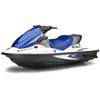 Maintaining your boat battery charger is something no one wants to think about. You never want to be "that guy" - you know the one we're talking about. The guy that's sitting in the lake tied to the dock with the engine cover off, kids crying and dog barking. The guy that is dead in the water because his battery is dead. Proper maintenance of your boat battery will ensure that you never become that guy. read more...
Maintaining your boat battery charger is something no one wants to think about. You never want to be "that guy" - you know the one we're talking about. The guy that's sitting in the lake tied to the dock with the engine cover off, kids crying and dog barking. The guy that is dead in the water because his battery is dead. Proper maintenance of your boat battery will ensure that you never become that guy. read more...Moving is Tough | Photos of New Warehouse
Posted on February 21, 2011
 Moving is tough. No matter how well you plan things out, there always seems to be something that causes a stir, gets left behind, or just plain jumps out and surprises you. As you may be aware, BatteryStuff recently completed a move that relocated us across town. As of today, we are all waiting with baited breath for Murphy to show up, but so far, so good. In fact, our total disruption of service due to the move was only about 4 hours. With that, we can be confident that our customer service is still world class and our move was nearly seamless. read more...
Moving is tough. No matter how well you plan things out, there always seems to be something that causes a stir, gets left behind, or just plain jumps out and surprises you. As you may be aware, BatteryStuff recently completed a move that relocated us across town. As of today, we are all waiting with baited breath for Murphy to show up, but so far, so good. In fact, our total disruption of service due to the move was only about 4 hours. With that, we can be confident that our customer service is still world class and our move was nearly seamless. read more...Tips and Tricks | Keeping Your Vehicle's Battery Alive
Posted on February 23, 2011
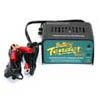 There is one component that can terminate your car’s performance - the battery. One could say your battery is the heart of your vehicle, and because of that fact, your battery, like your heart, requires maintenance, good care and the proper charger in order to support your vehicle’s life cycle. Without a functioning battery, your car or motorcycle will not start without a great deal of assistance and odds are other electronic components will not operate correctly either. There are four stages involved in charging your vehicle’s wet battery. read more...
There is one component that can terminate your car’s performance - the battery. One could say your battery is the heart of your vehicle, and because of that fact, your battery, like your heart, requires maintenance, good care and the proper charger in order to support your vehicle’s life cycle. Without a functioning battery, your car or motorcycle will not start without a great deal of assistance and odds are other electronic components will not operate correctly either. There are four stages involved in charging your vehicle’s wet battery. read more...Logic & Common Sense | Get the Inside Scoop Before a Purchase
Posted on March 3, 2011
 Setting aside scientific data, we can sometimes use common sense and logic to study a product. What are the claims made by the product? Could it possible do what the manufacturer claims? Enter common sense and logic, and a decent amount of trial and error on our part. We do our best to ferret out any issues with the products we carry so you don't have to. read more...
Setting aside scientific data, we can sometimes use common sense and logic to study a product. What are the claims made by the product? Could it possible do what the manufacturer claims? Enter common sense and logic, and a decent amount of trial and error on our part. We do our best to ferret out any issues with the products we carry so you don't have to. read more...Power When Away From Home | Using a Power Inverter
Posted on March 9, 2011
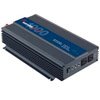 A power inverter running off a battery changes D.C. power to traditional A.C. power. You can use an inverter to supply power to devices such as televisions, microwaves, computers or power tools. They provide power in areas where you normally would not have access to standard 115-120 Volts AC from the power grid (ex: your home wall outlet). You simply connect the inverter to the battery and plug your device into the inverter. This is a great solution for having an easy to use, portable power supply. read more...
A power inverter running off a battery changes D.C. power to traditional A.C. power. You can use an inverter to supply power to devices such as televisions, microwaves, computers or power tools. They provide power in areas where you normally would not have access to standard 115-120 Volts AC from the power grid (ex: your home wall outlet). You simply connect the inverter to the battery and plug your device into the inverter. This is a great solution for having an easy to use, portable power supply. read more...Video Tutorial | Battery Banks Series - Parallel
Posted on April 5, 2011
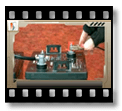 A battery bank is the result of joining two or more batteries together for a single application. What does this accomplish? Well, by connecting batteries, you can increase the voltage or amperage, or both. When you need more power, instead of getting yourself a massive super tanker of a battery, you can construct a battery bank. Watch our tutorial to learn how to successfully make these connections. If you need a reference, you can also view our written tutorial as well! read more...
A battery bank is the result of joining two or more batteries together for a single application. What does this accomplish? Well, by connecting batteries, you can increase the voltage or amperage, or both. When you need more power, instead of getting yourself a massive super tanker of a battery, you can construct a battery bank. Watch our tutorial to learn how to successfully make these connections. If you need a reference, you can also view our written tutorial as well! read more...Video Tutorial | Shorai LFX Battery Installation Video
Posted on June 16, 2011
 For all of you who have purchased or looking into the Shorai Lithium Iron Phosphate Batteries, here's an easy to understand install video direct from Shorai! These batteries are small, so they require the use of foam spacers. And since they're not direct OEM Battery replacements, you may need to modify or tweak your connections to make it work. But don't worry, it's not rocket science. This visual guide should show you everything you need to know about the installation process. read more...
For all of you who have purchased or looking into the Shorai Lithium Iron Phosphate Batteries, here's an easy to understand install video direct from Shorai! These batteries are small, so they require the use of foam spacers. And since they're not direct OEM Battery replacements, you may need to modify or tweak your connections to make it work. But don't worry, it's not rocket science. This visual guide should show you everything you need to know about the installation process. read more...AGM Battery Best Practices
Posted on August 25, 2011
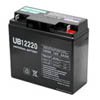 Lead Acid AGM batteries, also called "dry cell" and sometimes mistaken for "gel cel", are maintenance-free. That means you don't have to open them up every few months and add more water to the cells (even though they are dry batteries, that doesn't make them thirsty like a wet cell battery). You can also position them on their side without worrying about any leaks. So, let's get down to what to do and what not to do for your AGM battery. read more...
Lead Acid AGM batteries, also called "dry cell" and sometimes mistaken for "gel cel", are maintenance-free. That means you don't have to open them up every few months and add more water to the cells (even though they are dry batteries, that doesn't make them thirsty like a wet cell battery). You can also position them on their side without worrying about any leaks. So, let's get down to what to do and what not to do for your AGM battery. read more...Solar Panel Installation Tips
Posted on August 29, 2011
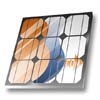 BatteryStuff Solar Panels use high quality Poly-Crystalline solar cells. Diodes contained within the junction box insure reliable operation and no drain during low light conditions. Anodized aluminum frames add strength and durability to the modules. Includes pre-drilled mounting holes. The modules have a 20-year, 80% power output warranty.For more information, check out our Solar Tutorials read more...
BatteryStuff Solar Panels use high quality Poly-Crystalline solar cells. Diodes contained within the junction box insure reliable operation and no drain during low light conditions. Anodized aluminum frames add strength and durability to the modules. Includes pre-drilled mounting holes. The modules have a 20-year, 80% power output warranty.For more information, check out our Solar Tutorials read more...Quick Ways to Extend ATV and Motorcycle Battery Life in Summer and Winter
Posted on September 21, 2011
 Wow, with fall weather knocking on our door (pounding on some?) it looks like we have just about wrapped up another summer season. And what a summer it was! Some of you had a real blistering summer, while others have got off way too easy. For sure, the weather here is Southern Oregon was absolutely fantastic, with a grand total of 0 days breaking the 100F mark. That is the first time I remember this happening in the 30+ years I have lived here. At the same time, I know some locales have seen record strings of hot weather. I guess it all balances out in the end. So, being a battery related post, you may be wondering what the tie in is to batteries? Actually, the weather plays a very important role in the lifespan of our batteries read more...
Wow, with fall weather knocking on our door (pounding on some?) it looks like we have just about wrapped up another summer season. And what a summer it was! Some of you had a real blistering summer, while others have got off way too easy. For sure, the weather here is Southern Oregon was absolutely fantastic, with a grand total of 0 days breaking the 100F mark. That is the first time I remember this happening in the 30+ years I have lived here. At the same time, I know some locales have seen record strings of hot weather. I guess it all balances out in the end. So, being a battery related post, you may be wondering what the tie in is to batteries? Actually, the weather plays a very important role in the lifespan of our batteries read more...Your Input Requested
Posted on September 27, 2011
 We have recently added a product review option for each of the products we carry. This setup will allow you to tell us and others what you think about the products you purchase. Please take advantage of this. It will not only act as a user based help tool, but will help us continue to improve our service and concentrate only on quality products and product services. We also are taking suggestions on new tutorials ideas. read more...
We have recently added a product review option for each of the products we carry. This setup will allow you to tell us and others what you think about the products you purchase. Please take advantage of this. It will not only act as a user based help tool, but will help us continue to improve our service and concentrate only on quality products and product services. We also are taking suggestions on new tutorials ideas. read more...Robin's Corner | AGM or Gel Battery
Posted on November 10, 2011
 Ok AGM stands for (Absorbed Glass Mat ) which means that the liquid that you would find in a wet cell battery is still there only the glass mat’s have absorbed all of it so that you don’t have it swooshing around inside the battery. Then the battery is sealed so that there is no worries about maintaining the battery. You may be asking yourself is it really that simple, I have to tell you that yes it is….we have more information on our web page under tutorials. read more...
Ok AGM stands for (Absorbed Glass Mat ) which means that the liquid that you would find in a wet cell battery is still there only the glass mat’s have absorbed all of it so that you don’t have it swooshing around inside the battery. Then the battery is sealed so that there is no worries about maintaining the battery. You may be asking yourself is it really that simple, I have to tell you that yes it is….we have more information on our web page under tutorials. read more...Warranty Test Tutorial
Posted on December 12, 2011
 One of the facts of life is that batteries fail. Some take years, but eventually they will all bite the dust. Rest assured it is uncommon for our customers to experience battery issues, as less then 1% of the powersports batteries we sell end up requiring a warranty. Our Scorpion brand and Yuasa brand from Motocross come with a 1 year replacement warranty against manufacturer defects. If the battery is suspect and is still under warranty, we will replace it. read more...
One of the facts of life is that batteries fail. Some take years, but eventually they will all bite the dust. Rest assured it is uncommon for our customers to experience battery issues, as less then 1% of the powersports batteries we sell end up requiring a warranty. Our Scorpion brand and Yuasa brand from Motocross come with a 1 year replacement warranty against manufacturer defects. If the battery is suspect and is still under warranty, we will replace it. read more...Knowledge Base | A New Look
Posted on January 13, 2012
 My experience with BatteryStuff has taught me a lot about technical concepts. Most of our products don't require a college degree to understand how to use them. We strongly believe in educating the customer and giving them the ability to make the best decision. We won't fool you into buying the most expensive item. We suggest products based on meeting the needs of your unique application. But before giving us a call and asking all of your questions, why not try a little research? read more...
My experience with BatteryStuff has taught me a lot about technical concepts. Most of our products don't require a college degree to understand how to use them. We strongly believe in educating the customer and giving them the ability to make the best decision. We won't fool you into buying the most expensive item. We suggest products based on meeting the needs of your unique application. But before giving us a call and asking all of your questions, why not try a little research? read more...Robin's Corner | How to Determine the Size of Your Solar System
Posted on February 10, 2012
 I am going to put in a solar system and I need to know what all I need for this project. The solar will have to operate a Refrigerator, washer, lights, TV, PC, and a power tool or two. Then know this; in order to accurately size your solar system, we need the following information:
I am going to put in a solar system and I need to know what all I need for this project. The solar will have to operate a Refrigerator, washer, lights, TV, PC, and a power tool or two. Then know this; in order to accurately size your solar system, we need the following information:
1. The amount of Draw that each device in your system uses. It is usually listed on the back of the unit near the power input and will be rated in volts (V), amps (A), or watts (W).
2. The amount of sun hours in your area (Direct sunlight)
3. The amount of hours each device in your system will be running in a 24 hour period. read more...
Battery Myth | Can a Battery ‘Reverse’ its Polarity?
Posted on May 8, 2012
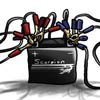 Actually, yes, but not without help. Reversing the polarity on a battery can happen only a couple of ways. For all intents and purposes, the battery will be ruined. You could technically charge it up, negatively, and continue to use it, but your plates are designed with the positive plates being lead dioxide, and the negative being composed of a sponge lead, which would now be reversed. The fact of the matter is, a lead acid battery cannot reverse its own polarity without an external stimulus. It is just not possible. read more...
Actually, yes, but not without help. Reversing the polarity on a battery can happen only a couple of ways. For all intents and purposes, the battery will be ruined. You could technically charge it up, negatively, and continue to use it, but your plates are designed with the positive plates being lead dioxide, and the negative being composed of a sponge lead, which would now be reversed. The fact of the matter is, a lead acid battery cannot reverse its own polarity without an external stimulus. It is just not possible. read more...What are the 3 Stages of Smart Chargers?
Posted on June 13, 2012
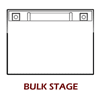 You may have heard it said "you need a 3 stage charger". We've said it, and we'll say it again. The best kind of charger to use on your battery is a 3 stage charger. They are also called "smart chargers" or "micro processor controlled chargers". Basically, these types of chargers are safe, easy to use, and will not overcharge your battery. Almost all of the chargers we sell are 3 stage chargers. But here's the million dollar question: What are the 3 stages? What makes these battery chargers so different and efficient? Is it really worth it? Lets find out by going through each stage, one by one. read more...
You may have heard it said "you need a 3 stage charger". We've said it, and we'll say it again. The best kind of charger to use on your battery is a 3 stage charger. They are also called "smart chargers" or "micro processor controlled chargers". Basically, these types of chargers are safe, easy to use, and will not overcharge your battery. Almost all of the chargers we sell are 3 stage chargers. But here's the million dollar question: What are the 3 stages? What makes these battery chargers so different and efficient? Is it really worth it? Lets find out by going through each stage, one by one. read more...

